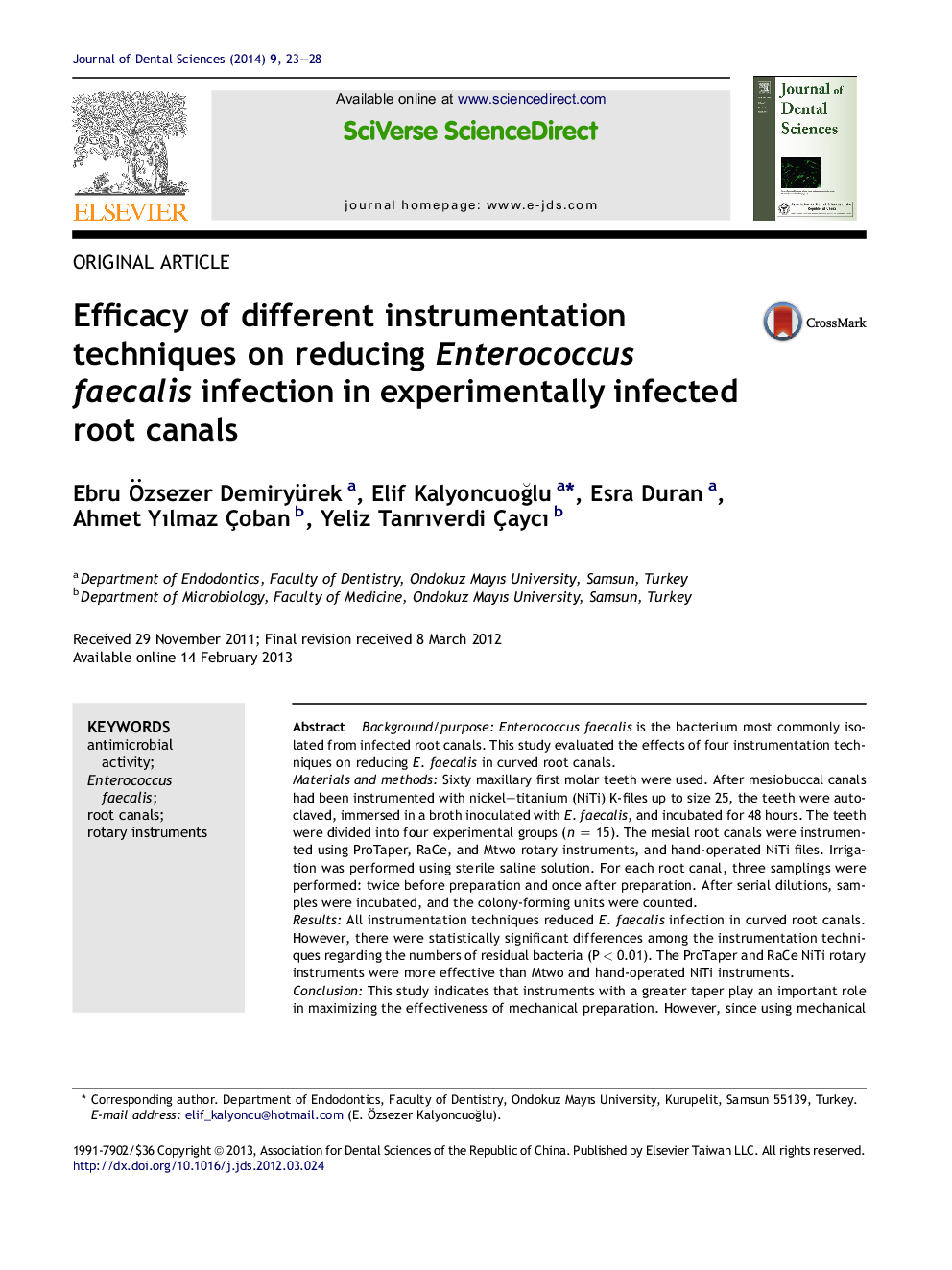| Article ID | Journal | Published Year | Pages | File Type |
|---|---|---|---|---|
| 3144749 | Journal of Dental Sciences | 2014 | 6 Pages |
Background/purposeEnterococcus faecalis is the bacterium most commonly isolated from infected root canals. This study evaluated the effects of four instrumentation techniques on reducing E. faecalis in curved root canals.Materials and methodsSixty maxillary first molar teeth were used. After mesiobuccal canals had been instrumented with nickel–titanium (NiTi) K-files up to size 25, the teeth were autoclaved, immersed in a broth inoculated with E. faecalis, and incubated for 48 hours. The teeth were divided into four experimental groups (n = 15). The mesial root canals were instrumented using ProTaper, RaCe, and Mtwo rotary instruments, and hand-operated NiTi files. Irrigation was performed using sterile saline solution. For each root canal, three samplings were performed: twice before preparation and once after preparation. After serial dilutions, samples were incubated, and the colony-forming units were counted.ResultsAll instrumentation techniques reduced E. faecalis infection in curved root canals. However, there were statistically significant differences among the instrumentation techniques regarding the numbers of residual bacteria (P < 0.01). The ProTaper and RaCe NiTi rotary instruments were more effective than Mtwo and hand-operated NiTi instruments.ConclusionThis study indicates that instruments with a greater taper play an important role in maximizing the effectiveness of mechanical preparation. However, since using mechanical instrumentation alone is insufficient to completely eliminate root canal infection, the use of complementary antibacterial compounds is necessary.
